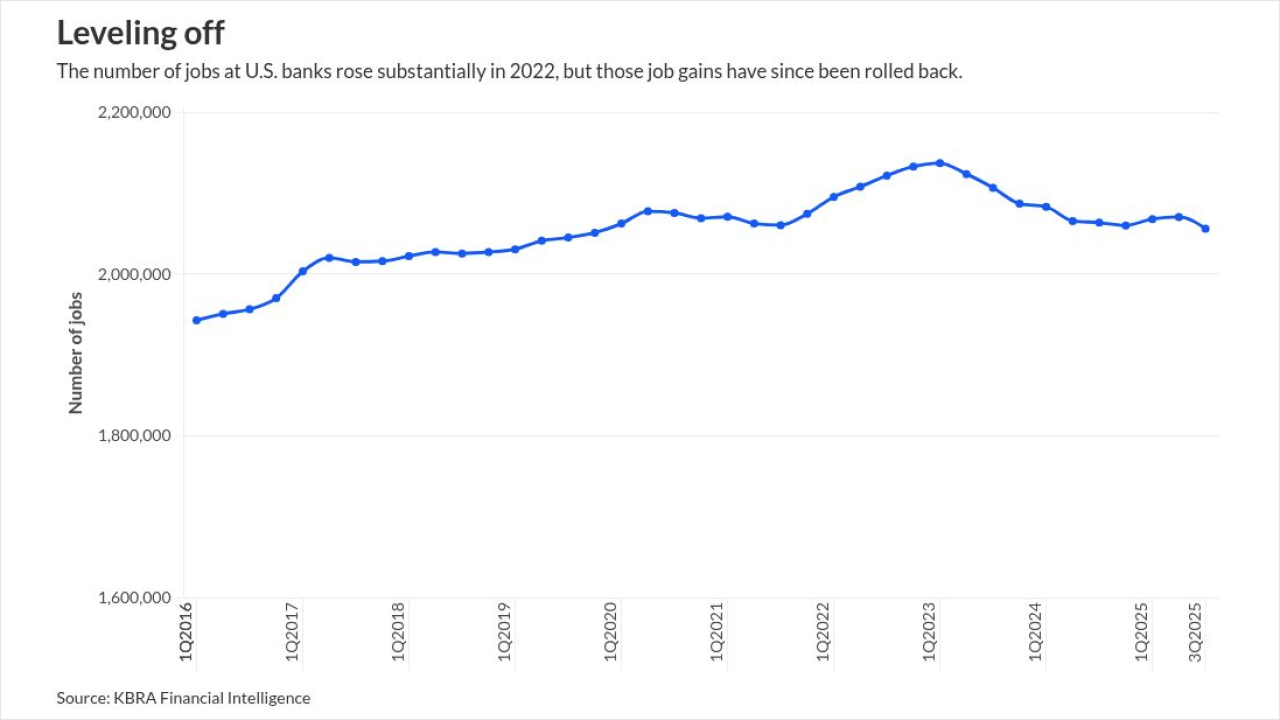In 1998, American Trust and Savings Bank in Dubuque, Iowa, started offering basic online banking - for checking balances and other simple transactions.
The reason, says executive vice president Jim Hamilton, is that everybody else was doing it. Internet banking was "a necessity to compete for customers and to keep customer relationships."
Preventing defections to larger banks was also the main motivation for thousands of other community bankers.
But after an initial surge, interest in American Trust's online banking service leveled off. One reason was lack of aggressive promotion; the bank thought the service too bare-bones to be worth marketing, Mr. Hamilton says.
That experience is hardly unique. Though most community banks now offer some sort of Internet banking, few would characterize it as a smashing success. Many customers still prefer to visit branches, and those who have embraced online banking want more than the ability to check balances and transfer funds.
As a result, banks like the $629 million-asset American Trust are rethinking their Internet strategies.
Many community banks that adopted online banking platforms in haste a few years ago are just now starting to substantially expand their services in hopes of steering more customers to the Internet. American Trust, for example, recently began e-mailing statements to its Internet banking customers and plans to offer online check imaging in the next few weeks.
Its strategy seems to be working. Though profits remain elusive - cutting costs, not making money, is what drives banks to invest in Internet banking - American Trust says the number of customers using its Internet banking service has climbed 30% this year, to 16,000, or 30% of its customer base.
Bankers, consultants, and technology vendors say community banks are finally starting to attract Internet customers because they have learned from larger banks what services are most popular. For example, community bankers know that there is little demand for account aggregation.
Another factor, experts say, is the recent drop in what banks must pay third parties. That has encouraged banks to market their online offerings more aggressively.
"Clearly, everybody got into the game as quickly as they could so they wouldn't be perceived as having a competitive disadvantage," said David Burns, a partner in the Philadelphia office of Grant Thornton LLP, an accounting and consulting firm. "And clearly, now they have a better understanding of the functionality and how they can utilize this tool to cement customer relationships."
Mr. Burns said that when online banking was first rolled out, many small banks did not completely understand how various arrays of options worked, so they offered only basic features.
In a 1999 Grant Thornton survey of executives from banks with less than $1 billion of assets, 46% said they would offer online bill pay by the end of 2000. In a repeat survey last year, 86% said they would do so by the end of 2005.
Jeff Kupietsky, the vice president of Internet banking for the software vendor Digital Insight Corp. of Calabasas, Calif., said check imaging and e-mail statements are among the features its bank clients are requesting most often. In fact, he said, more than one-fourth of its small-bank customers are offering one or both of these services. (Digital Insight has about 1,600 bank and credit union clients).
Linda Fischer, the general manager of electronic banking for the Milwaukee technology vendor Metavante Corp., said more banks have also been asking it for additional online services in the past year, particularly check imaging and online bill pay.
Community banks are typically hesitant to introduce services until they see them successfully offered at regionals, Ms. Fisher said.
In Texas, Bank and Trust of Del Rio recently started offering check imaging and bill pay to all customers, and it is considering putting loan applications online as well.
President and CEO Sid Cauthorn said that though the $254 million-asset bank has made no money from online banking, it still promotes it in its branches and may even start marketing it to the wider community - because it helps attract customers.
"Some people may not be using it again and again, but it's nice to just have it there, from a comfort-of-mind standpoint," he said. Roughly 25% of the bank's customers are now online customers, Mr. Cauthorn said.
And though most bankers recognize that online banking will not generate income, they are doing what they can to reduce the cost.
Banks that outsource to their core processors or Internet banking vendors pay a per-user fee each month after the initial start-up fee. Most vendors, though, have tiered pricing, with lower fees per user after a certain number of them.
Monthly per-user fees range from $1 to $2, versus $1.75 to $2.50 three years ago, said Scott Hodgins, a partner with the Scottsdale, Ariz., bank consulting firm Cornerstone Advisors Inc. Vendors began to cut prices around 2000, when core processors got into the Internet banking game, he said.
"Core providers got smart and figured out that that basic functionality was all their customers were using and all they wanted," Mr. Hodgins said. "So they did not need to offer all the deep bells and whistles."
What is driving prices down today, he said, is not increased competition but bankers' knowledge of what they need and don't need. Bankers can play vendors off one another now that they understand what each vendor offers and what meets their requirements, he said.
Mr. Hamilton said that as American Trust and Savings has expanded its services, it has negotiated down the price it pays its vendor, Metavante. The reduction will not make online banking profitable, he said, but American is saving money as users multiply.
Still, some say that vendors charge too much, and that many banks will market Internet services half-heartedly until prices come down.
Beacon Financial Inc. in Atlanta offers software that brings these services in-house. Charles Potts, its president, said most community banks still pay too much because they have too few users to qualify for the cheaper price tier.
"You've got banks out there paying more for Internet banking for 10% of their customer base than they pay for all of their outsourced processing," Mr. Potts said. "Bankers are now realizing they can't afford this business model that penalizes them for going out and aggressively marketing Internet banking."
Beacon introduced its Compass Internet Banking Platform in September. Mr. Potts, who has managerial experience at various Internet banking vendors, said the software gives banks total control over their Internet banking.
Some banks have the expertise to bring online operations in-house without third parties' help. The $4 billion-asset United Community Banks Inc. of Blairsville, Ga., runs all but its bill-paying function - and plans to handle that too.
A year ago, when United introduced electronic bill payment at its three banks, the job was more complex than it was used to, CEO Jimmy Tallent said. "We felt it was necessary to begin with a vendor that was popular at the time."
But now that United understands the ins and outs of the service, "we think we can successfully bring it in house," he said.
The in-house model for Internet banking not only saves money but provides online usage data that helps with target marketing, Mr. Tallent said. Ten percent of United's customers use its online banking services, he said.
Chris Musto, the vice president of research at the online banking consultant Gomez Inc. in Waltham, Mass., said many community banks did not promote the options intensively because they had offered them without completely understanding them.
"Community banks were slow to market these things and to train customer service on technology and integrate it into their product delivery," Mr. Musto said.
Many banks simply announced new features in statement stuffers. Some are now pushing harder. For example, since this spring American Trust has been running testimonial advertisements about online banking and its other offerings.
A year ago Digital Insight, recognizing that its customers were more interested in marketing Internet services, introduced a "growth and retention" kit that Mr. Kupietsky said provides a marketing strategy and materials for community banks.
"They now know how to use the services," he said. "Now they want to know how to market" and make them accessible for the end user.





